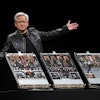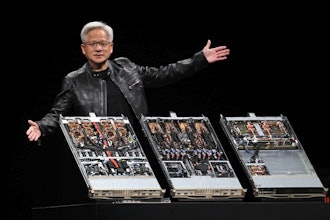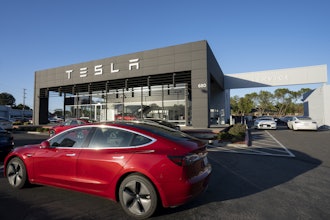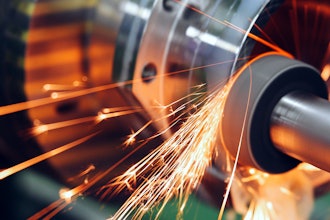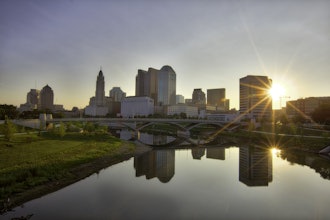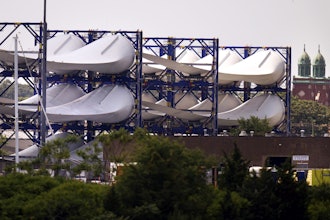Only four years ago, the first “bullet train” line in mainland China opened to great fanfare. Like tall buildings and modern airports, a high-speed rail line is considered to be a sign that a nation has joined the industrialized world, and Chinese citizens were justly proud of their new high-speed rail lines, which have mushroomed since then.
But last July 23, the Chinese high-speed rail industry received a shock that has reverberated to the highest levels of government.
Details are still hard to come by, apparently, and I am working from secondary sources in English. But the basic story appears to be this: On a rail line leading to the coastal city of Wenzhou, a high-speed train was traveling through a thunderstorm. Suddenly, lightning struck. Exactly what it struck is not clear.
Some reports say the train itself was hit, disabling it and bringing it to a halt. Other reports say the signaling system was disabled. In any event, lightning crippled either the power or signaling systems or perhaps both, leaving the train stranded on a viaduct some 60 feet above the ground.
Then a second train approached and slammed into the stranded one. Several cars fell to the ground or were derailed, hundreds were injured, and forty people died of their injuries.
The accident was tragic enough, but public reaction intensified when, after a week or so of competitive and often scathing news coverage accusing the government of incompetence and corruption, the government’s censors clamped down on further negative reporting.
This sent many citizens to so-called “micro-blogging” sites similar to Twitter, where people can post up to 140 Chinese characters. And they did, criticizing government censorship of investigations into the crash and questions about whether China has rushed into high-speed rail too fast.
Even in the West where media coverage is over-generous, it would take months for an official board to thoroughly investigate a complex accident such as the Wenzhou disaster. So we should not be surprised that a definitive answer to the question of what caused the accident has not yet emerged.
China’s premier Wen Jiabao, who has been visibly concerned about the accident starting the day after it occurred, said on Aug. 10 that China was suspending approvals of new high-speed rail projects and taking steps to ensure the safety of existing systems, including lowering maximum speeds temporarily.
All the same, it creates an atmosphere of distrust to issue orders from censorship agencies to quit covering certain topics. Old habits die hard, and the bad old days when electronic media were limited to a single government-run TV station and a few radio channels, plus the party papers, apparently allowed censors to get used to the idea that they could steer public opinion like a farmer steers an ox.
But with the proliferation of modern computer-based media, it’s getting harder and harder to steer opinion this way. Even in China, where the government has made strenuous efforts (often abetted by American high-tech companies) to restrain the free flow of information on the Internet, the censorship regime is showing signs of coming unglued. And the rail accident has only put more strain on it.
Still, the government is the only entity, which has the resources and access to technical information to investigate the accident in a competent way. I do not know how such investigations are organized in China, but one can hope there is a measure of independence for the technical experts charged with getting the facts straight. In the U. S., the National Transportation Safety Board has a mostly unimpeachable record of independence from political pressure.
In all the many accidents I have looked into that were investigated by the NTSB, I do not recall any incidents in which the board’s integrity was ever questioned because of political motives. This doesn’t mean it has never happened or never will. But the fact that most transportation systems in the U. S. are privately owned (AMTRAK being a glaring exception) means there is little political motive to prettify accident reports.
In China, on the other hand, the government has its economic hands in most major undertakings, including high-speed rail. Add that to the heightened sensitivity to criticism that characterizes new kids on the block, and you have plenty of motivation for the Chinese government to whitewash accident reports. Perhaps the lightning strike was a one-in-a-million occurrence that is unlikely to happen again.
With six thousand miles of high-speed rail in operation, much of it built in the last four years, the fact that China has not had another major rail accident of this magnitude says something positive about the system. Lightning can do some pretty unpredictable things, and it may turn out that this accident was way down the list of likely problems that the engineers had to consider.
Publicly owned rail systems seem especially prone to engineering ethics controversies. One of the canonical engineering-ethics cases of all time occurred in the 1970s during the testing of a new Bay Area Rapid Transit train system. Some bad technical flaws were covered up and the engineers involved went public, leading to considerable controversy and a classic engineering-ethics story.
Nevertheless, my sympathies are with those who lost loved ones in the Chinese accident. And I hope that the whole controversy surrounding coverage of the accident will lead to greater openness on the part of the government of China, as well as improved safety for millions of Chinese who ride the rails.
Sources: I consulted several news reports on the accident, including coverage by the BBC, Bloomberg and Businessweek , and Reuters and http://www.reuters.com/article/2011/08/01/us-china-train-censorship-idUSTRE7700ET20110801. A summary of the BART train incident can be found in Stephen H. Unger’s Controlling Technology: Ethics and the Responsible Engineer (1982).

